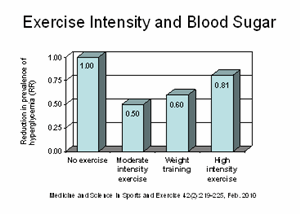Embarking on a journey to manage diabetes, especially as a senior, can feel like navigating uncharted waters. But let’s anchor down to a truth – the right kind of exercise, such as cycling, can be a lighthouse guiding you towards better health and blood sugar control. It’s not just about moving your legs; it’s about steering your wellness in a direction that brings joy, vitality, and control over your diabetes.
Key Takeaways
Cycling improves insulin sensitivity, essential for blood sugar management.
Regular cycling can help seniors maintain a healthy weight, reducing diabetes risk.
Monitoring blood sugar before, during, and after cycling is crucial for safety.
Nutrition and hydration are key to a successful cycling routine for diabetic seniors.
Community support, through cycling groups or buddies, provides motivation and safety.
Why Cycling is a Sweet Ride for Blood Sugar Control
Picture this: the wind in your hair, the sun on your back, and your blood sugar levels getting a much-needed tune-up with every pedal stroke. Cycling isn’t just a leisurely activity; it’s a form of exercise that gets your heart pumping and muscles moving, helping your body use insulin better and lowering your blood sugar levels. It’s like giving your body a natural insulin boost without the need for a prescription.
The Lowdown on Blood Sugar and Exercise
When you exercise, your body demands energy, and it finds it in the form of glucose. As your muscles contract, they soak up glucose like a sponge, which helps lower the amount of sugar in your bloodstream. This process is especially beneficial for managing diabetes, where blood sugar control is a daily battle.
Now, you might wonder, why cycling? Well, it’s a low-impact exercise, which means it’s gentle on the joints while still being mighty effective for blood sugar management. Plus, it’s something you can do at your own pace, and it’s enjoyable – two crucial ingredients in an exercise recipe that sticks.
Why Seniors Should Consider Cycling
As we age, our bodies change, and high-impact exercises can become less appealing or feasible. Cycling stands out because it’s something you can continue doing well into your senior years. It’s not just about managing diabetes; it’s about maintaining independence, mobility, and a zest for life.
Besides that, cycling can be a social activity. Joining a cycling group or pairing up with a friend not only makes the ride more enjoyable but also provides a sense of community. It’s about sharing the road to wellness and cheering each other on every mile of the journey.

Pedal Your Way to Better Health
Before you jump on the bike, it’s essential to gear up properly. Safety and comfort are paramount, especially for seniors. This means choosing a bike that’s the right size, with easy-to-reach handlebars and a comfortable seat. Don’t forget a helmet to protect your noggin and bright clothing to ensure you’re visible to others.
Starting with the Right Gear
Investing in the right gear is like laying down the first brick on your path to improved health. You’ll need a reliable bike, a helmet that fits snugly, gloves to grip the handlebars comfortably, and perhaps cycling shoes that offer more pedal power. It’s all about creating a safe and enjoyable experience that’ll keep you coming back for more.
Setting Realistic Cycling Goals
Starting small is the key. Maybe aim for a short ride around the block and gradually increase your distance as you feel more comfortable. Remember, the goal is to find joy in the journey, not to exhaust yourself. Set achievable milestones and celebrate each one – it’s these victories that pave the way to transformation.
Stay tuned for more insights on how to monitor your blood sugar levels effectively while enjoying your ride, and how to fuel and hydrate your body to keep those wheels turning smoothly on your cycling adventure.
The Signs of Blood Sugar Swings
Understanding the signs of blood sugar fluctuations is crucial for anyone, but especially for seniors with diabetes. When you’re cycling, be on the lookout for symptoms like dizziness, sudden fatigue, confusion, or even excessive sweating. These can all signal that your blood sugar levels are off-kilter.
But why does this matter? Because knowing these signs can help you act quickly to prevent a minor swing from becoming a serious problem. Keep in mind, symptoms can vary from person to person, so it’s important to learn how your body specifically reacts to changes in blood sugar levels.

“Benefits of Bike Riding for Seniors …” from www.bicycling.com and used with no modifications.
Best Practices for Tracking Glucose While Cycling
Now, let’s get down to the nitty-gritty. To keep a close eye on your blood sugar while cycling, you’ll want to check your levels before you start pedaling, at regular intervals during your ride, and after you finish. This might sound like a lot, but it’s the best way to prevent any surprises. For those interested in ageless exploration on two wheels, monitoring glucose is especially crucial.
Carry a small, portable glucose meter with you. Today’s technology is compact and easy to use, so there’s no excuse not to have it on hand. And remember, if you’re going for a longer ride, it’s wise to bring along some fast-acting carbohydrates like fruit or glucose tablets just in case you need a quick boost.
What’s more, keep a log of your readings along with notes on your activity level, what you ate, and how you felt. Over time, this log will become a valuable tool, helping you see patterns and understand how cycling affects your blood sugar levels. It’s like having a roadmap that shows you how to navigate your diabetes management.
Most importantly, if you ever feel off during a ride, don’t hesitate to stop and check your levels. It’s always better to play it safe than to push through and risk a health issue.
Check blood sugar levels before, during, and after cycling.
Carry a portable glucose meter and fast-acting carbs.
Keep a detailed log of your blood sugar readings and related activities.
Listen to your body and stop if you feel unwell.
Nutrition and Hydration for the Long Haul
When it comes to cycling, or any exercise for that matter, your body needs the right fuel to perform at its best. This means eating a balanced diet that includes plenty of fiber, lean protein, and healthy fats. And for those with diabetes, it’s essential to understand how different foods affect your blood sugar levels.
Before you ride, opt for a meal or snack that provides sustained energy. Think whole grains, nuts, or yogurt. These foods break down slowly, helping to keep your blood sugar levels steady as you cycle.
Essential Nutrients for Active Seniors
As we age, our nutritional needs change. Seniors need to focus on getting enough calcium for bone health, vitamin D for calcium absorption and immune function, and B vitamins for energy metabolism. Make sure these are part of your diet, either through food or supplements if recommended by your healthcare provider. For those who enjoy senior mountain biking, ensuring these nutrients are included in your diet can help maintain the energy needed for this engaging activity.
Protein is another key player. It helps repair and build muscle tissue, which is especially important after exercise. And let’s not forget about fiber. It’s not just good for digestion; it also helps regulate blood sugar levels, making it a superstar nutrient for diabetics.
Iron and antioxidants are also important. Iron keeps your blood healthy, and antioxidants fight inflammation, which can be exacerbated by diabetes. Foods like leafy greens, berries, and beans can help you hit these nutritional goals.
For example, a breakfast that might power you through a morning ride could be oatmeal topped with almonds and blueberries. It’s packed with fiber, protein, and antioxidants – a trifecta of nutrients that can help manage blood sugar levels and provide sustained energy.
Hydration Before, During, and After Rides
Let’s talk hydration. Water is the most essential nutrient for life, and it’s critical when exercising. Dehydration can affect your blood sugar levels and your physical performance, so drink plenty of fluids before you start cycling, take sips throughout your ride, and rehydrate afterwards.
If you’re planning a longer ride, consider an electrolyte solution to replace what you lose through sweat. But be cautious with sports drinks – many are loaded with sugar. Look for low-sugar options or make your own with a splash of juice in water and a pinch of salt.
Safety and Support on Two Wheels
Cycling is more enjoyable when you know you’re safe. That means not just wearing the right gear, but also being prepared for any situation. Always let someone know where you’re going and when you expect to be back, and consider carrying a phone in case of emergencies.
Riding with a Buddy or Group
There’s strength in numbers. Riding with a buddy or joining a cycling group not only makes for a more enjoyable experience but also adds a layer of safety. If you’re feeling unsure or need assistance, having someone there can make all the difference. Plus, it’s a great way to stay motivated and accountable to your exercise goals.
Knowing When to Take a Break
Listen to your body. It’s the best gauge you have for knowing when to push and when to rest. If you’re feeling tired or notice any symptoms of low blood sugar, it’s time to take a break. Sit down, have a snack, and check your glucose levels. Cycling should be challenging, but it should never compromise your health.
Chronicling Success: Stories of Senior Cyclists
Real stories have the power to inspire. Take John, for instance, a 70-year-old with type 2 diabetes who took up cycling and saw his HbA1c levels improve dramatically. Or Mary, who found that cycling helped her lose weight, which in turn made it easier to manage her blood sugar levels.
These stories aren’t just heartwarming; they’re proof that change is possible at any age. They show us that with determination, the right approach, and a bicycle, you can transform your life, even in the face of diabetes.
How Regular Cycling Transformed Lives
Take the story of Susan, a 65-year-old retiree who was diagnosed with type 2 diabetes. After starting a cycling routine, Susan noticed significant improvements in her blood sugar levels. She began with short, 10-minute rides around her neighborhood, gradually increasing her endurance. Over time, Susan’s HbA1c levels—a measure of blood sugar control over the past 2-3 months—decreased. This is a testament to the power of regular, moderate exercise like cycling in managing diabetes.
Then there’s Michael, who at 72, believed his days of physical activity were limited. Encouraged by his doctor to start cycling, he hesitantly gave it a try. To his surprise, he found a new passion. Not only did his blood sugar levels stabilize, but cycling also gave him a newfound sense of freedom and adventure, proving that it’s never too late to benefit from the joys and health advantages of cycling.
Frequently Asked Questions
As you embark on this cycling journey, questions are bound to arise. Here are answers to some of the most common inquiries to help you pedal forward with confidence.
Whether you’re wondering about the specifics of how cycling aids in blood sugar control or the best practices for starting out, we’ve got you covered. Let’s address these queries, one by one, ensuring you’re equipped with the knowledge to make your cycling experience as beneficial and enjoyable as possible.
Remember, while this guide serves as a starting point, always consult with your healthcare provider before beginning any new exercise regimen, especially if you have concerns specific to your health condition.
How Does Cycling Specifically Help with Blood Sugar Control?
Cycling helps control blood sugar in several ways. Firstly, it increases insulin sensitivity, which means your body is better able to use the insulin it produces to manage blood sugar levels. Additionally, cycling helps you maintain a healthy weight, which is crucial for preventing or managing diabetes. Moreover, the activity prompts your muscles to use glucose for energy, thereby lowering blood sugar levels naturally during and after exercise.
What is the Best Time of Day for Seniors to Cycle?
The best time of day for seniors to cycle is typically in the morning when energy levels are higher and temperatures are cooler. However, the most important factor is to choose a time that fits into your schedule consistently. Regularity is key to maintaining blood sugar control, so pick a time you can stick to, ensuring that cycling becomes a part of your routine.
Also, consider your meal times and medication schedule. You don’t want to cycle on a full stomach or when your medication might cause blood sugar levels to drop too low. It might take some experimentation to find the perfect time, but once you do, it’ll become second nature.
Can You Start Cycling if You’ve Never Exercised Before?
Absolutely! Cycling is a great exercise for beginners because it’s low-impact and can be done at your own pace. Start with short distances on flat terrain and gradually increase as you feel more comfortable. Always listen to your body and don’t push too hard too fast. It’s about progress, not perfection. For those interested in beginning their cycling journey, consider exploring ebike options for seniors as a starting point.
Consulting with your healthcare provider before starting is also a smart move. They can provide personalized advice and ensure that you’re ready to take on this new activity safely.
What Safety Measures Should Diabetic Cyclists Take?
Safety is paramount, especially for diabetic cyclists. Here are some key measures to take:
Always wear a helmet and appropriate safety gear.
Carry identification and medical information with you.
Bring a glucose meter, snacks, and water to manage and monitor your blood sugar levels.
Inform someone of your route and expected return time.
Know the signs of hypoglycemia and hyperglycemia and how to respond.
Are Electric Bikes a Good Option for Seniors with Diabetes?
Electric bikes, or e-bikes, can be an excellent option for seniors with diabetes. They provide a boost when needed, making it easier to tackle hills and longer distances without overexerting yourself. E-bikes allow you to customize your workout intensity, which can be particularly beneficial if you’re new to exercise or managing health conditions.
However, it’s important to still pedal and engage in physical activity to reap the blood sugar management benefits. As with any new form of exercise, consult with your healthcare provider to ensure it’s a safe option for you.
And there you have it—a comprehensive guide to senior cycling for blood sugar control, health, and wellness. Remember, the journey to better health is a marathon, not a sprint. So, gear up, get on that bike, and start pedaling towards a healthier, happier you.



Leave a Reply